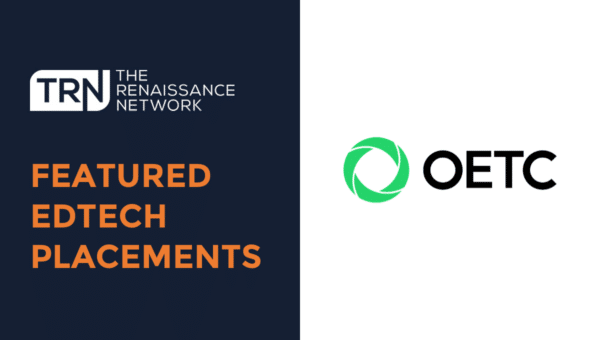What will be the biggest trends in 2018?
Last year we discussed the high demand for talent in the marketplace. I believe this is still correct, maybe even more so in 2018. In addition, candidates are getting multiple offers and this has made the market much more competitive.
Another trend I’m seeing is the restructuring of sales teams’ methodologies. This year we have partnered with many companies that are exploring the idea of moving from a field model to an inside model. This has resulted in some companies transitioning from employees having multiple responsibilities to a more structured and segmented format. I think this strategic approach is a product of increased levels of astuteness that many of our clients are displaying when building their teams. Organizations are becoming much more aware of the short and long-term implications of hiring the correct talent. Companies are becoming more, but also, they’re building more sophisticated hiring strategies, technology is having a huge part in that. Leaders are becoming more educated on how they sell to target markets and are restructuring their sales team and resources accordingly.
Do you think the EdTech customer is getting smarter?
Yes, of course, the customer is getting smarter because now school districts are starting to get used to buying technology. In addition, the new generation of educators are much more comfortable using technology, they have a clearer understanding of what they want and are now challenging sales teams to deliver.
What do you think stops a company from building successful teams?
Information. They do not have the correct information to know, (a) what they should be building and (b) how to go about building it.
When companies are looking to build a team that they believe will be successful, they are often not considering many potential factors. One example of this is if your company is in the middle of a city that doesn’t have a great candidate pool, but you are looking to bring in a high volume of people, then you need to do the research. I see too many companies that say they want to build certain teams in a specific geographical area, but that may not be realistic. Often companies neglect the fact that there are not always enough candidates. One way to gather the information needed to build a realistic plan is to research the types of companies in that location which might have the talent you can hunt and recruit.
How much responsibility do you think needs to be put on the direct hiring manager to make sure they are planning correctly?
It’s the hiring manager’s responsibility, but it’s also the CEO (or whoever sets the strategy for the hiring process) who is ultimately responsible for the strategy of the company. I think that’s why it’s important to start from the top by bringing in a smart sales or business development leader before building a team.
As a CEO, what are the main priorities for building a new team?
Obviously, return on your investment! But you must also question if you have the right people in the right regions. I am a big believer in setting out compensation appropriately so you can recruit the correct level talent.
I would also say make sure you have the correct strategy; try to refrain from rushing the process. Don’t always look at history to create your strategy because what worked yesterday might not work tomorrow. Always work from what you are trying to accomplish, build your financial models and then challenge your hiring process against that to see that you’re hiring the correct people.
Another area that I think can be neglected is investing in your employees. Future proofing can go a long way to reducing churn. I think training plays a big part. We live in an age of continuous learning and investing in a resource can assist both onboarding and future success.
What can be put in place to make a hire successful?
I believe you need to first make sure they start! Often when companies get a candidate to sign they believe the job is complete – it’s not. Often the time between signing and the start date can be the riskiest. This is because before a candidate starts they’re still out in the market. Granted they may have signed but you need to make sure that they are not still looking. Therefore, I believe that managing people through the onboarding process starts the day they sign with you. You need to make them feel part of the company before they even begin.
Another area that I think gets overlooked during the interview process is truly understanding a candidate’s behavioral traits. This is valuable information that often gets overlooked, but it can really help inform your onboarding process. I am a strong believer that you should view each hire as a long-term investment and that means having the correct mindset and planning for the long term. Seeing each employee as an individual and developing a level of customization within the onboarding framework can be helpful, but admittedly large organization can afford to have a more cookie-cutter approach. Ultimately, constantly checking in with new employees and having clear communication is going to have a big impact on success.
What responsibility does a search partner have in a candidate’s success?
In my opinion, a lot. In all the placements TRN makes in partnership with clients we conduct a feedback loop over a one month, three months and five/ six months. We are now beginning to check-in around the year mark to make sure that both the client and candidate are happy. I believe that checking in with the candidate can generate valuable feedback that provides insight to our client. The partnership is important because sometimes a new hire will open up and provide feedback positive or negative that they may not disclose to leadership directly. I think it has helped many of our client’s success with candidates.
We provide advice and feedback on the people we hire for all our clients. You should expect any hiring partner who is investing in your long-term success to be doing the same.
Summarize 2017 and what to expect in 2018.
I think the EdTech industry is becoming more competitive in general. Businesses are growing and it is no longer a fledgling market. Globalization of the market is continuing and this is opening new pools of talent. A lot of partners that we work with are expanding internationally – whether it’s companies from outside the US expanding into US markets or vice versa.
We have seen our list of clients from continuing education and non-profits grow. It has been interesting working with strong mission-driven, non-profit organizations that are running like a very efficient growth-driven, for-profit organization. They are building very strong business development and marketing teams, but are solely focused on the mission. I think that companies in this space that are succeeding are those that are modeling their sales and marketing teams after for-profits instead of saying, “We are non-profit, we don’t push sell or we’re not aggressive.”
The market will continue to see the sophistication of the sales team increase and become more data-driven. I think that more and more EdTech companies will continue to function more like a company within the wider technology market.
For 2018 consider developing and future proofing your employees, analyze how to increase the candidate talent pool, and continue to review and develop your hiring process to complement your growth goals.



